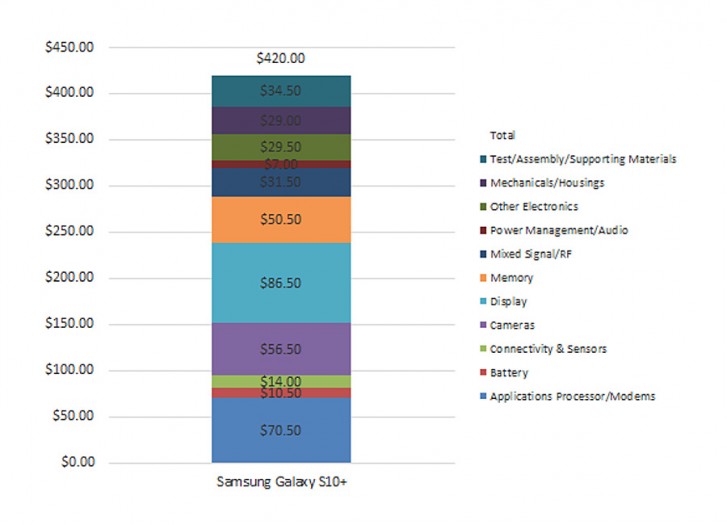After announcing the new flagship devices at Galaxy Unpacked event, Samsung is working to make it available across the globe. Amid the availability concerns, experts at TechInsignts have got a hands-on the actual bill of materials used in Galaxy S10+. As per the bill, Samsung has added materials worth $420 in the Galaxy S10+ device. The overall cost is inclusive of its assembly and testing along with the supporting materials.

Although, the Korean giant has invested little more in Camera and Display components this time. Its display with a punch hole is the most expensive element at $86.50 in the Galaxy S10+. Further, there’s a Exynos chipset worth $70.50 along with a RAM and storage module which costs $50.50. Its wonderful triple camera module (12MP+12Mp+16MP) add up to a total of $56.50.
Moreover, Galaxy S10+ is a global device and needs compatibility as accordingly with the networks. In order to make it adaptable with every network provider across the globe, there are a Mixed-signal and RF components worth $31.50 in the device. Further, the charging and all other electronic equipment are present in the device amounting to the total bill of $36.50.
Surprisingly, Exynos 9820 is actually cheaper than its predecessor by $10 due to a reduction in wafer prices. All the elements in the Galaxy S10+ 8GB/128GB storage variant cost $420 along with its assembly and testing. The bill does not include expenses on its Research & Development, marketing, and other aspects.
Additionally, the Galaxy S10+ comes packed with a 6.4-inch QHD+ Infinity-O display featuring 1440 x 3040 pixels resolution. It hosts Exynos 9829 chipset with 8GB RAM and 128/512 GB internal storage options. Samsung has purely focused on its cameras featuring triple rear camera modules and dual front cameras. Even though, DxOMark has awarded it as the best selfie camera. It runs on Android 9.0 Pie out of the box with One UI on the top.
The pre-orders are already live in the US, China, Europe, and India. It will start shipping along with pre-applied screen protector to the customers by March 8.







